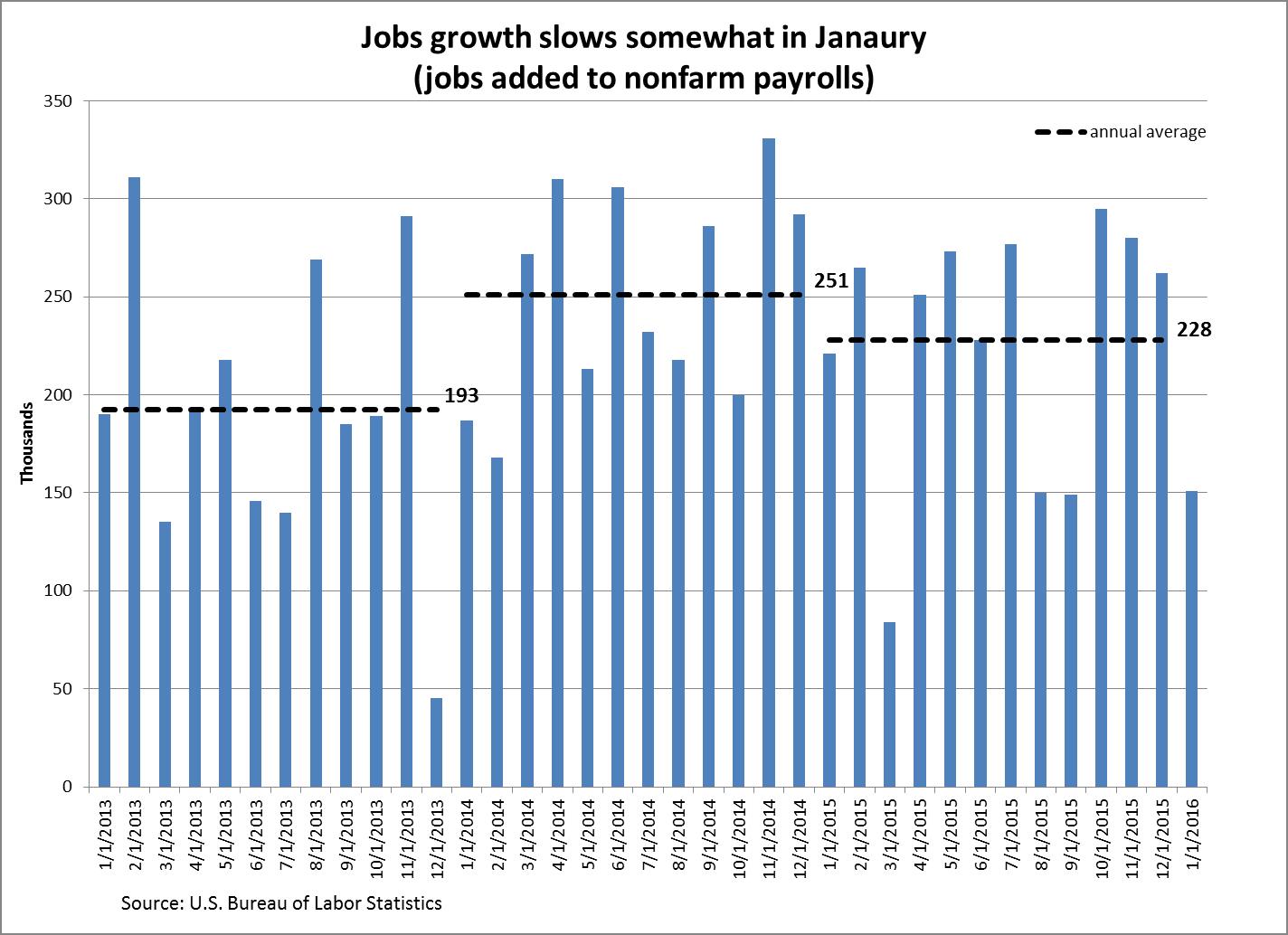Good Signs, Hidden in the Jobs Report
Despite a somewhat slower pace of jobs growth in January, there are signs of further improvement in labor market conditions. But to understand them, you need to look beneath the surface.
According to the latest report from the Bureau of Labor Statistics, the U.S. economy added 151,000 jobs in January, a slower pace than was seen in 2015, when on average, 228,000 jobs were added per month (see chart). In December, according to the revised data, the economy added 262,000 jobs.
The unemployment rate fell slightly to 4.9 percent, from 5 percent in December. Most economists consider such a low unemployment rate to be consistent with the U.S. economy being close to full employment, which is a situation when not much slack exists in the labor market.
The private sector has been driving this jobs growth. In January, the private sector added 158,000 jobs while government jobs shrunk by 7,000, with reductions in both state and federal government employment.
In the private sector, most jobs were added in the services providing industries (118,000). Within services, the retail trade sector added the most jobs, at 57,700. Goods producing industries added only 40,000 jobs, with manufacturing adding the most (29,000) and mining actually losing jobs (-7,000), likely due to contraction in the oil extraction sector.
The somewhat slower pace of jobs growth in January is consistent with the slowdown in GDP growth in the fourth quarter of 2015. Jobs growth usually lags behind the changes in overall economic growth.
Despite the modest increase in payroll employment in January, there are signs of improvements in the overall state of the labor market. More people are joining the labor force and more of those who join find jobs.
The January numbers conflate two sources of changes – the change that comes from the actual processes in the economy and the statistical adjustment for population control effects, which the Bureau of Labor Statistics does every January.
To properly see the changes in the economy, we should ignore the population control adjustment. If we do that, the numbers show that 284,000 people joined the labor force in January. But more people, 409,000, found jobs. This brought up the labor force participation rate (from 62.6 to 62.7 percent), brought up the employment-to-population ratio (from 59.5 to 59.6 percent), reduced the number of the unemployed people by 125,000, and reduced the unemployment rate (from 5 to 4.9 percent). Finally, the number of people who are out of the labor force also shrunk by 88,000.
This shows that people are coming back into the labor force – usually a sign that they are seeing an improvement in their jobs prospects. And they are successful at finding jobs. These are all signs of improvements in the labor market conditions.
The average duration of unemployment, however, increased a bit – from 27.6 to 28.9 weeks. Such a high average reflects a substantial number of long-term unemployed – almost 27 percent of the unemployed have been out of work for half a year or more. Most of the unemployed, however, find work more quickly than that. More than half of the unemployed have been out of work for less than 11 weeks. In the face of shrinking unemployment, the increase in the average duration of unemployment means that it is mostly the short-term unemployed who find jobs.
Click here to sign up for the Daily Economy weekly digest!









